| LaTeX figures | Including LaTeX figures in a LaTeX text is the fastest way to add smaller illustrations in TeX. It saves the trouble to include additional ( sometimes large) Postscript and style files. LaTeX figures can also be useful for example if you want to assure a hassle-free submission to a preprint archive and a fast download from the preprint archive. |
|---|---|
| Mathematica export | Writing LaTeX figures using Bezier curves is inconvenient to do by hand. Any scripting language can help with this. Here is a Mathematica implementation. Why Mathematica? Because it is good when the scripting language knows how to find automatically the tangent to a curve. This requires a higher level programming language. The rest of the job could equally fast be done with an other language like C or Perl. By the way, Mathematica is quite well suited to do shellscript programming. |
| Bezier curves. |
 Bezier curves were introduced by Pierre Bézier in the 60's
(who worked in the Rénault car manufacturing company in France).
Bezier drawing is familiar to any user of vector-based drawing programs.
(
try it ).
LaTeX figures can include Bezier curve data. This allows to specify
the location and direction of the curve at finitely many points.
Complicated curves can be described like this with a surprisingly
small amount of information.
Bezier curves were introduced by Pierre Bézier in the 60's
(who worked in the Rénault car manufacturing company in France).
Bezier drawing is familiar to any user of vector-based drawing programs.
(
try it ).
LaTeX figures can include Bezier curve data. This allows to specify
the location and direction of the curve at finitely many points.
Complicated curves can be described like this with a surprisingly
small amount of information. By the way: this GIF animation was exported directly from Mathematica using GifMovieTool.m |
| Alternatives | Programs which allow to export LaTeX figures are 'xfig' or 'gnuplot' . Gnuplot is convenient and nice for graphs but exports relatively bulky LaTeX figures. For example, the gnuplot commands example.gpl produces a TeXfile of size 20K. (To try it, just run 'make' with this Makefile ). |